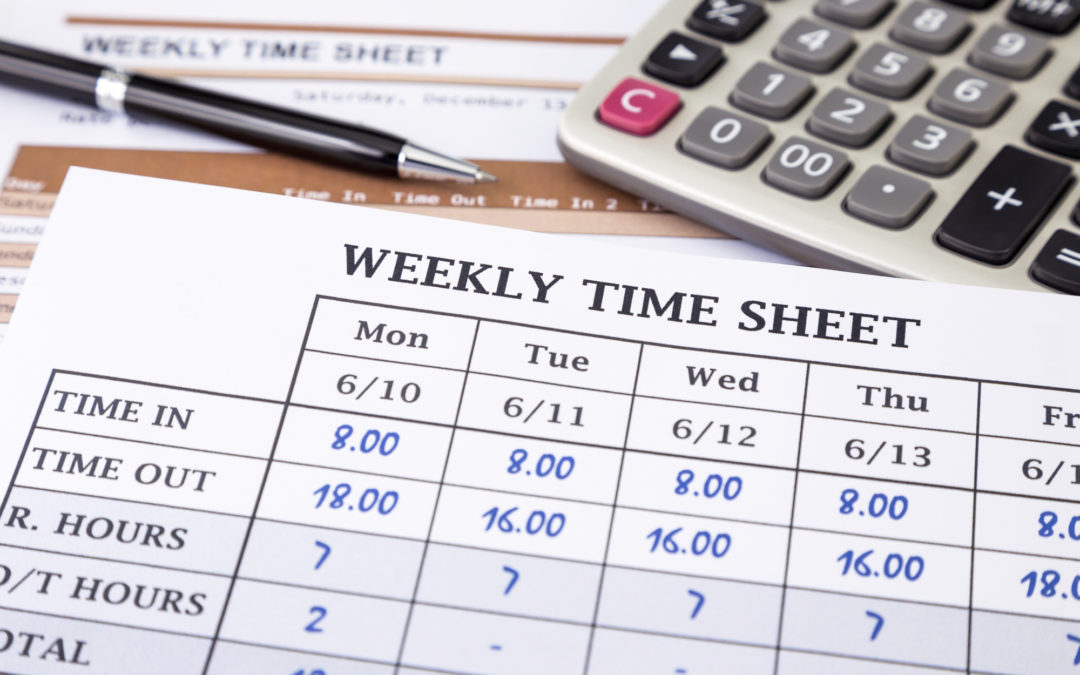
Compliance, Time & Attendance
Mistakes are an unfortunate reality of doing business, but mistakes with payroll are different – and potentially extremely problematic. When you overpay an employee, you lose money. When you underpay an employee, you agitate him or her – and could potentially face legal repercussions. These instances occur more frequently with hourly employees but can happen to salaried workers as well. Here’s how to handle each situation.
According to the Fair Labor Standards Act (FLSA), employers that make a one-time overpayment to an employee can recoup the overpayment by deducting that amount from the employee’s next paycheck. (Keep in mind state regulations can differ.) But don’t go rogue. Keep your employees informed by following these 4 steps:
Determine how much you overpaid the employee during the pay period.
Contact the employee you overpaid and breakdown the situation (no need to panic)
Inform them you plan to deduct the overpayment out of their next paycheck
Ask them if this will cause a financial burden (remember, when an employee receives extra money–whether they notice it or not–they may spend it right away).(If yes, try to arrange installments that you both agree on. This will hopefully reduce the changes of resentment.)
(If no, simply make the deduction.)
If an employee has been underpaid, it needs to be fixed as soon as possible. Follow our step-by-step guide to working out how to fix an underpayment:
- Work out how long the employee has been underpaid
- Work out how much the employee was actually paid
- Work out how much the employee should have been paid
- Calculate how much the employee has been underpaid
- Backpay the employee
- Keep up to date with future wage increases
Because the number one reason for overpayment or underpayment is human error, you should consider automating your payroll process if you haven’t already. To learn more about how Highflyer can help your company avoid complicated payroll mistakes, call us today or visit https://www.highflyerhr.com/our-solution/payroll/.

Articles, Time & Attendance
Whether you have a small office or a set of retail stores, you have a lot of expenses to consider. And if you hire hourly employees, you need to track their time and attendance to pay them accurately.
But tracking hours can be hard and time-consuming. Luckily, payroll technology can help.
Read more to learn why you should use time and attendance tracking.
1. Keep Track
Unless all of your employees work for a salary or commission, you need to track your hourly employees. That way, you can know what to pay them based on their hourly rate.
If you have a lot of employees, tracking their hours manually can be difficult. You have to know what shifts everyone works and for how long.
Using a time and attendance system can simplify this process for you. Payroll software can keep track of hours as they occur, making it easier to record them and pay employees each pay period.
Even if you don’t have hourly employees, you can use the system to keep track of attendance. Then, you can make sure everyone is working the hours they should.
2. Run Reports
At the end of a pay period or month, you may want to see how much you will pay all of your employees. You can see if that cost is within your budget or if you can’t afford it.
Your time and attendance reports can show you if you have any patterns. If you do need to cut costs, you can use these reports to decide where.
Perhaps you aren’t very busy and don’t need a full staff on Tuesday mornings. If you have high payroll costs during that time, that’s an easy way to lower your expenses.
You can find trends with your payroll reports, and they can tell you a lot. Then, you can use the information to adjust how you run your business.
3. Comply With the Law
You have to make sure you comply with the Fair Labor Standards Act (FLSA). The act sets standards for hourly pay and overtime compensation.
If you have hourly employees, you’ll need to pay them one and a half times their regular pay for any hours they work after the initial 40. The law also limits how much employees under 18 can work and what jobs they can do.
You also need to follow the Occupational Safety and Health (OSH) Act to make sure you have a safe place for employees to work. Various other laws regulate workers’ compensation and employee protection.
Using time and attendance software can ensure you follow all of these guidelines. That way, you don’t break any rules that could shut down your company.
4. Save Money
Payroll technology can also help your company save money. As you review your time and attendance reports, you can see how much you’re spending on labor versus the revenue you’re earning.
If you aren’t making money at a certain office or location, you can adjust the employee schedule. And even if you are making money, you can see how you can increase profits by changing when employees work.
While you may need a full staff on the weekends or other busy times, you don’t always need a ton of people to work. If you know how much people work, you can edit your schedules to save money.
Then, you can still run your office or stores efficiently. But you won’t have to pay more for labor than necessary.
5. Save Time
Consider how much time you or someone in your company spends verifying employee hours. And think about how much time individual employees spend tracking the hours they work.
All of that time can add up, and it can keep you from focusing on more important tasks and projects. If you don’t use time and attendance software, you may need to spend a long time verifying records each pay period.
You’ll need to verify each shift for every employee that worked. That may not seem that bad if you have 20 employees, but if they all worked 10 days in one pay period, that’s 200 records that you have to check.
Using a program to track time will give you more freedom and control over your business and how you run it.
6. Avoid Employee Time Theft
Another benefit of using payroll software is that you can avoid employee time theft or at least limit it. When you rely on employees to report their time, you have to believe them.
Someone may lie and say they stayed just long enough to get some overtime. Now, this isn’t a huge problem with exempt status employees.
However, if someone steals a bit of time each day, that can add up over a month or year. When multiple people start to do it, you could lose a lot of money to unnecessary labor.
With time and attendance software, you can see when people clock in and out. You can even edit their time clocks if they have errors.
7. Accurate and Timely Pay
If you have employees who don’t want to use your time and attendance system, consider that it can benefit them, too. When you have to track and verify time manually, that can delay when you’re able to send out direct deposits or paychecks.
After switching to a time and attendance system, all you have to do is check for errors. If your payday doesn’t occur for weeks after the pay period ends, you can move it up.
Then, employees can get paid sooner after the pay period. You can send accurate payments to all of your employees, so you can maintain accurate books for all expenses.
You can access your time and attendance information from anywhere. So if you want to check it as soon as the pay period ends, you can log on from your laptop or mobile device.
Tracking Time and Attendance
If you have any hourly employees, tracking their time and attendance is crucial. You can review your payroll expenses and decide how to schedule shifts in the future.
Tracking time and attendance can also help you ensure you pay employees and follow legal regulations. That way, you can keep your business up and running.
Are you ready to use time tracking software? Schedule a free demo today.







